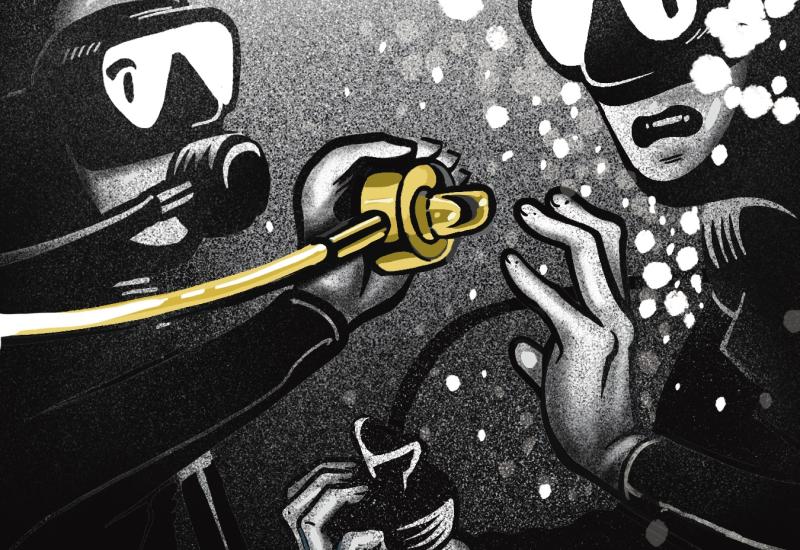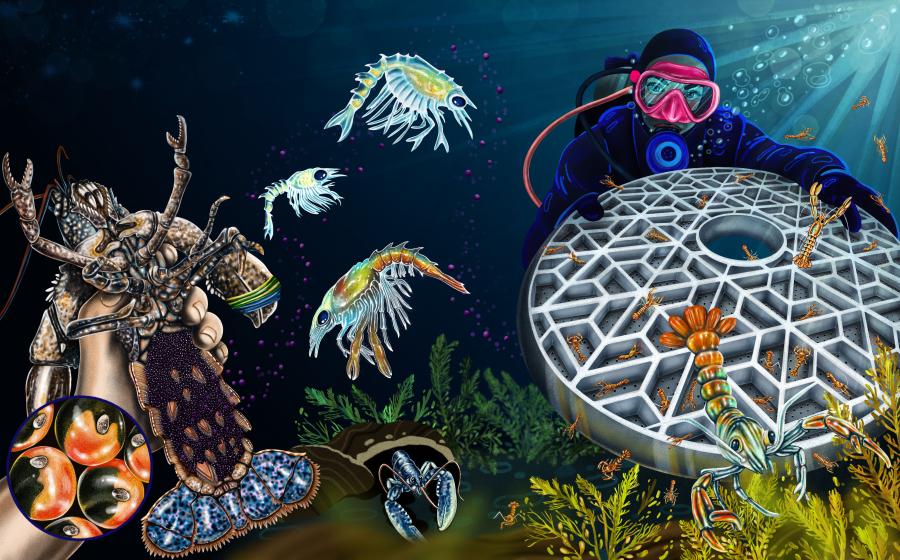Outer Limits | Lessons for Life

Steven P. HughesNerves push a diver over the edge during a deep wreck dive.
The divers were exploring a shipwreck at the very edge of recreational diving limits: 130 feet of seawater. They were careful not to exceed that limit, but they hovered just off the deck at their maximum depth. Kevin was uncomfortable on the dive. The depth, the loss of light and the pressure he felt to see as much of the dive as he could in their limited bottom time weighed heavily on him.
Kevin and his buddy wrapped up the dive and headed toward the anchor line. In the gloom, Kevin lost sight of his buddy. He twisted around, looking for anyone else on the wreck. In the process, he got twisted up in the buoy line—and began to panic.
The Diver
Kevin was a 41-year-old male with an advanced open water certification and 50 lifetime dives. He had averaged 10 dives a year, mostly in his local quarry, since he was certified.
The Dive
It was the first dive of the day. Kevin and his buddy were diving off of a local charter along with 10 other divers. The boat crew had hooked onto a dive buoy attached to a shipwreck that rested in 150 feet of seawater at the sand, with its deck and structure rising from there. Kevin had planned the dive to a maximum depth of 130 feet and was diving on air. According to the PADI Recreational Dive Planner, they had a maximum of 10 minutes on the bottom at that depth before they would exceed their no-decompression limits.
Kevin and his buddy were each using a single tank. They knew their air-consumption rates would be high at that depth, and Kevin realized his bottom time would be limited both by time and air-supply factors. Prior to the dive, Kevin tried to remember everything his dive instructor had taught him about deep diving in his advanced open water class. This was the deepest dive he had made since his training. He recalled that he would lose light at depth, and color. He wondered out loud how he might react to gas narcosis at depth.
The Accident
Nearing the end of their allotted dive time, Kevin’s buddy signaled that it was time to head back to the boat. At first Kevin didn’t seem to recognize the signal or his buddy’s meaning, but after a couple of tries, he nodded his head and swam toward the bow of the wreck where the buoy line was attached.
At the buoy line, Kevin’s buddy reported that Kevin turned back and forth in the water as if looking for something. In the process, Kevin’s tank valve and BCD got twisted up in a piece of rope attached to the buoy line. Kevin’s buddy tried to get Kevin to stop moving so he could assist him, but Kevin wasn’t focusing on anyone around him. Then Kevin spit out his regulator. Kevin’s buddy tried giving Kevin his own alternate air source, but Kevin wouldn’t take it.
Another diver arrived as Kevin’s buddy indicated he had to surface because he was low on air. Kevin was still entangled in the rope with no regulator. The third diver used a knife to cut Kevin loose and sent him to the surface by inflating Kevin’s BCD and dropping his weights. Kevin was unconscious at that point. He floated to the surface alone with his regulator out of his mouth. When he arrived, the boat crew quickly grabbed his unconscious body and pulled him onto the boat, but were unable to resuscitate him. The medical examiner declared Kevin’s death a drowning.
Analysis
Several factors came into play in this accident, including entanglement and quite likely gas narcosis. Just as important, though, was what happened before the divers even entered the water.
Kevin was uncomfortable with the dive while they were still on the boat. That predive stress likely contributed to his problem. Drs. David and Lynn Colvard have performed groundbreaking research into panic situations in divers. Their initial research, published in 2003, included 12,000 accident reports. One of their primary findings was that “pre-existing anxiety or stress combines with an unexpected, stressful event leading to panic in some divers.” David Colvard explained in an email that “the thing that came out most clearly was that all the panicked divers were anxious before they ever entered the water. This was true of student and experienced divers.”
Kevin hadn’t been on a deep dive in several years. He had an advanced open water certification, but that is not the same as experience on deep dives. In this case, it may have contributed to Kevin’s nervousness since he vaguely remembered the potential problems with the dive but couldn’t recall what to do about them. It is clear from the reports of the other divers that Kevin also had gas narcosis. The only thing that negates gas narcosis, however, is ascent. It is likely that diving to 130 feet with a limited air supply increased Kevin’s worrying about not exceeding that depth, how long his air would last and seeing enough of the wreck before he would be forced to ascend. When he got entangled in the floating rope, he couldn’t think clearly enough to extricate himself or allow anyone else to do it for him.
Divers often question why a panicked diver spits out their regulator at depth, even when they have air in their tank. There isn’t a clear answer, but it is likely tied to panic and the tunnel vision that comes with it. Predive nerves don’t automatically signal that there will be a problem, but they can be a precursor to an accident should something else happen. It is best to address the reason for concern before the dive and either overcome it by asking for help or cancel the dive.
Lessons for Life
- Don’t dive beyond your comfort level. Seek out a refresher, or dive with a buddy who is a divemaster or dive instructor.
- Be properly prepared and equipped for the dive. Deep diving on air with a limited gas supply increases your risk.










